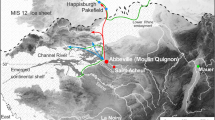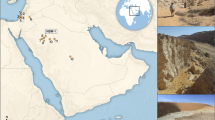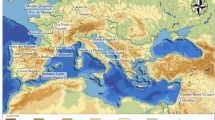Abstract
IN my letter in NATURE of September 21, p. 475, in the fifth paragraph, I said that the oscillation which marks Bed III at Oldoway and the Intrapluvial in Pluvial II, in Uganda, ” may be equated with that between the Kamasian and Gamblian” of Kenya. That was wrong, for it has recently become clear that following the Uganda Pluvial If oscillation, and separated from it by a considerable thickness of sediments, there were two less marked breaks. Study of the implements from these two non-pluvial beds reveals the fact that the last actually represents the break equivalent to that between the Kenya Kamasian and Gamblian pluvials, since in it were some tools (Late Acheulean) comparable to the Nanyukian. The latter stage was found by Dr. J. D. Solomon on the slopes of Mount Kenya in a rubble which was regarded as marking the Kamasian-Gamblian Interpluvial.
This is a preview of subscription content, access via your institution
Access options
Subscribe to this journal
Receive 51 print issues and online access
$199.00 per year
only $3.90 per issue
Buy this article
- Purchase on Springer Link
- Instant access to full article PDF
Prices may be subject to local taxes which are calculated during checkout
Similar content being viewed by others
Author information
Authors and Affiliations
Rights and permissions
About this article
Cite this article
O'BRIEN, T. South and East African Stone Age Typology. Nature 136, 760–761 (1935). https://doi.org/10.1038/136760c0
Published:
Issue Date:
DOI: https://doi.org/10.1038/136760c0
Comments
By submitting a comment you agree to abide by our Terms and Community Guidelines. If you find something abusive or that does not comply with our terms or guidelines please flag it as inappropriate.



